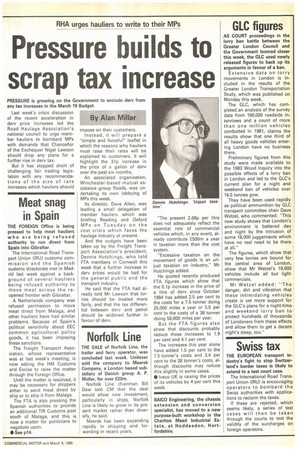GLC figures
Page 5

If you've noticed an error in this article please click here to report it so we can fix it.
AS COURT proceedings in the lorry ban battle between the Greater London Council and the Government loomed closer this week, the GLC used newly released figures to back up its arguments in favour of a ban.
Extensive data on lorry movements in London is included in the results of the Greater London Transportation Study, which was published on Monday this week.
The GLC, which has completed an analysis of the survey data from 160,000 roadside interviews and a count of more than one million vehicles conducted in 1981, claims the results show that one third of all heavy goods vehicles entering London have no business there.
Preliminary figures from this study were made available to the 1983 Wood Inquiry into the possible effects of a lorry ban in London and led to the GLC's current plan for a night and weekend ban of vehicles over 16.5 tonnes gvw.
They have been used rapidly as political ammunition by GLC transport committee chair Dave Wetzel, who commented: "This new study shows that London's environment is battered day and night by the intrusion of some 18,000 juggernauts which have no real need to be there at all."
The figures, which show that very few lorries are bound for the central area of London, show that Mr Wetzel's 18,000 vehicles include all but light commercials.
Mr Wetzel added: "The danger, dirt and vibration that these intimidating vehicles create is yet more support for the GLC's plans for a night-time and weekend lorry ban to protect hundreds of thousands of Londoners from these effects and allow them to get a decent night's sleep, too."
















































































